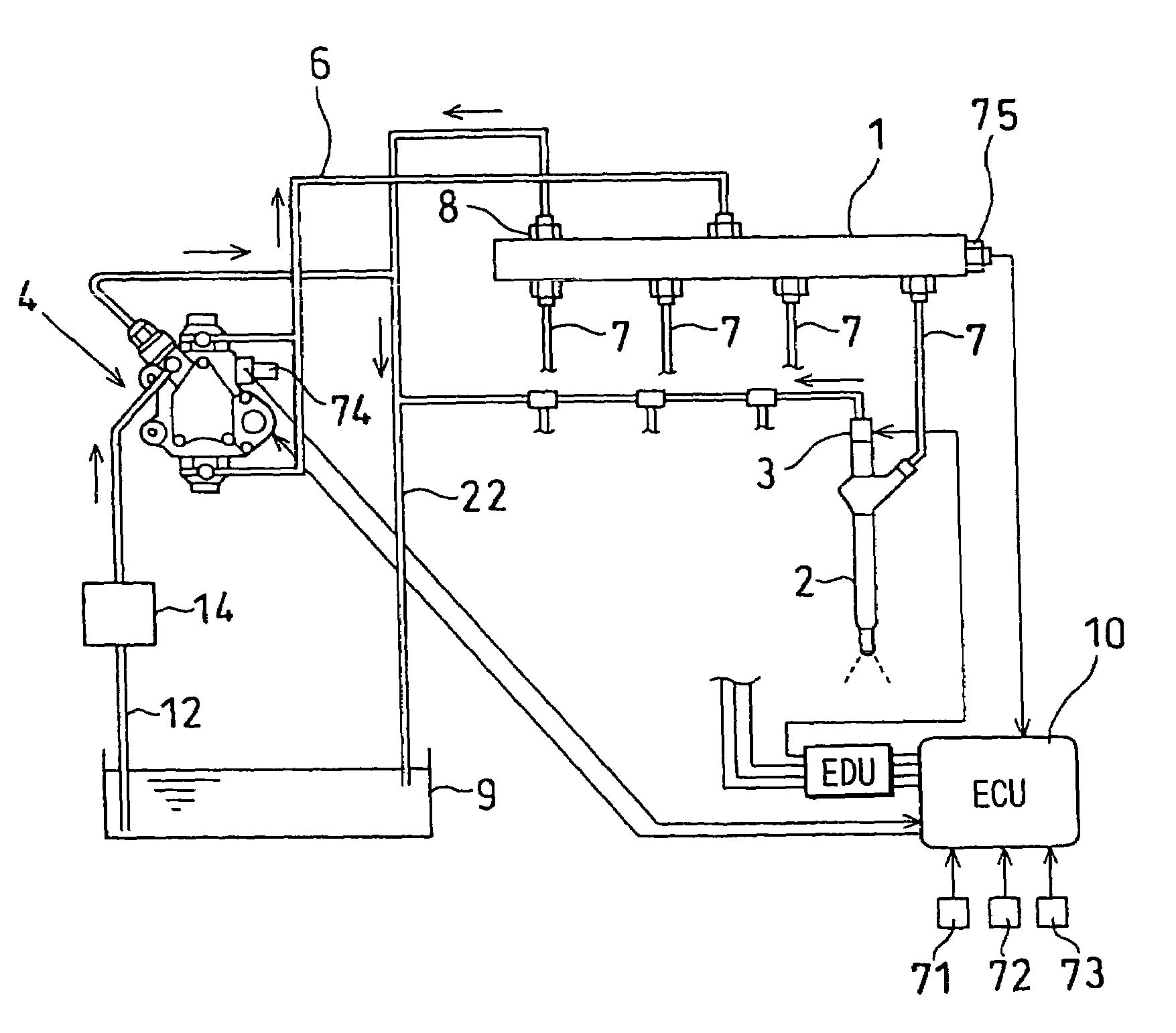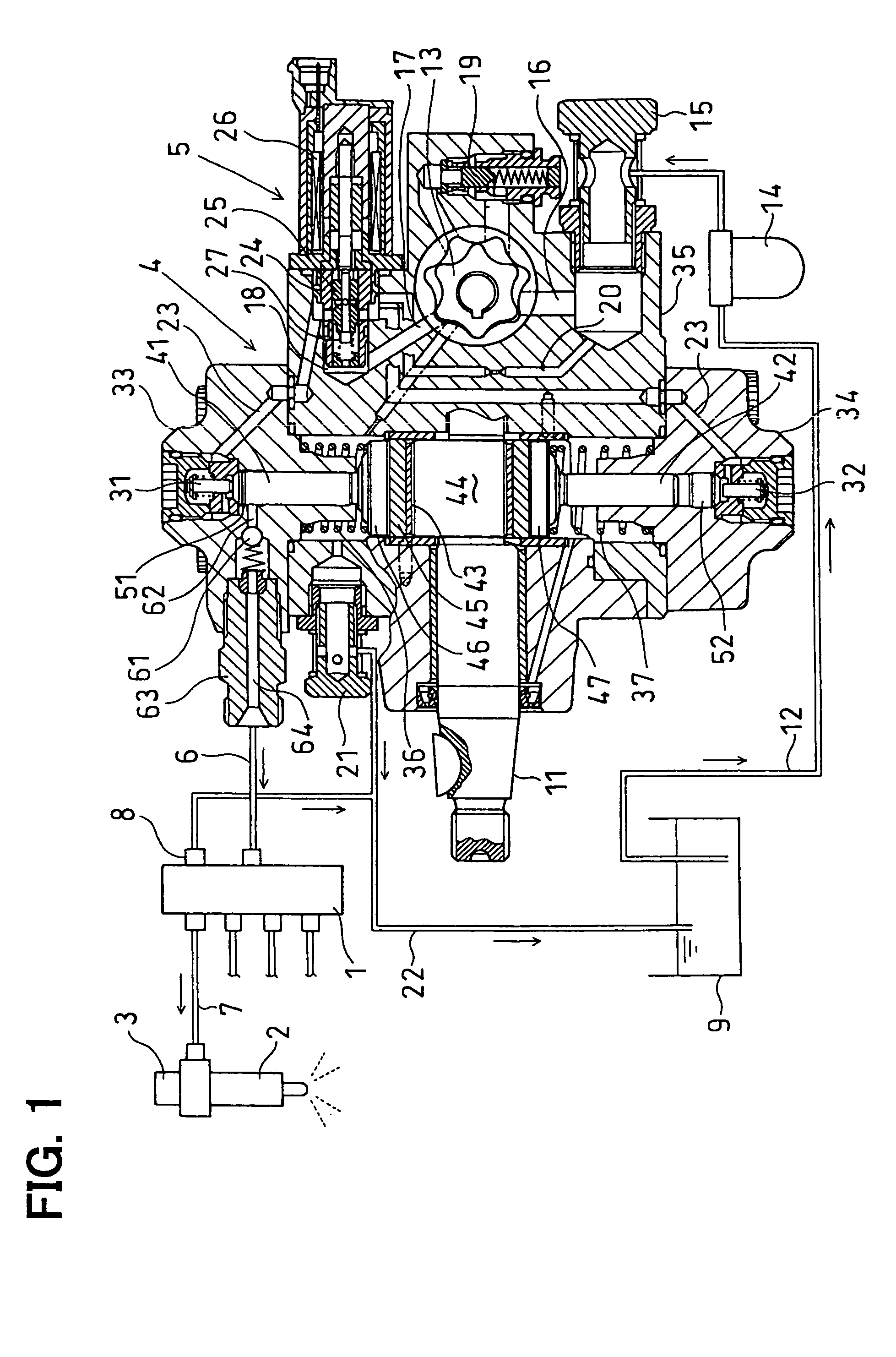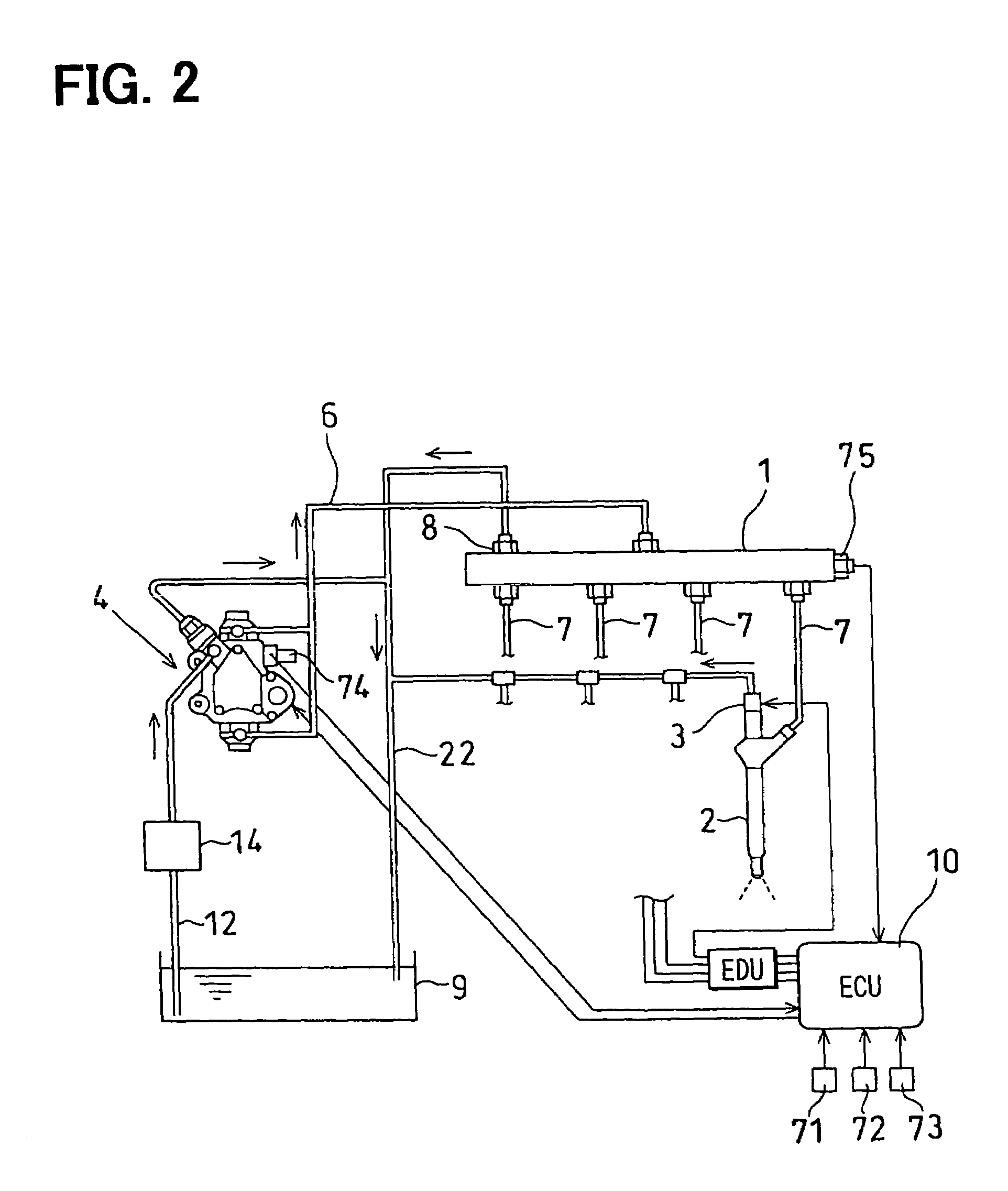Fuel injection system for an internal combustion engine
a fuel injection system and internal combustion engine technology, applied in the direction of machines/engines, electric control, speed sensing governors, etc., can solve the problems of overshoot of fuel pressure, abnormal high-pressure condition of high-pressure fuel portions, and excessive feedback correction quantity for replenishing pump pressure-supply quantity, so as to prevent deterioration of controllability for pressure
- Summary
- Abstract
- Description
- Claims
- Application Information
AI Technical Summary
Benefits of technology
Problems solved by technology
Method used
Image
Examples
first embodiment
[0052]FIGS. 1 to 13 illustrate the present invention. FIG. 1 shows an entire construction of a supply pump. FIG. 2 shows an entire construction of a common rail type fuel injection system. FIG. 3 is a timing chart showing crank angle, fuel discharge rate, pressure waveform in normal condition, fuel discharge rate, and pressure waveform in inoperative condition of one pressure-supply system.
[0053]A fuel injection system for an internal combustion engine according to the first embodiment is a common rail type fuel injection system (an accumulator type fuel injection system) which is known as a fuel injection system for an internal combustion engine (hereinafter referred to simply as “engine”) such as a multi-cylinder diesel engine mounted on a vehicle, e.g., automobile. It is constructed so that a high-pressure fuel stored within a common rail 1 is injected into combustion chambers of cylinders in the engine through a plurality of injectors (electromagnetic type fuel injection valves)...
second embodiment
[0136]FIG. 14 is a flowchart showing a pump discharge quantity troubleshooting method of the present invention. In FIG. 14, the same control processings as in the main routine of FIG. 4 are identified by the same reference numerals and, therefore, explanations thereof will be omitted.
[0137]When the answer in Step S4 is affirmative, i.e., XCND=1, a common rail pressure change in 360° CA period corresponding to the total outflow quantity of fuel flowing out from the plurality of injectors 2 is calculated in a pump pressure-supply period in which at least one of the plurality of pressure-supply systems supplies fuel under pressure. More specifically, the total outflow quantity is multiplied by the bulk modulus E, then the value obtained is divided by the total volume V of the high-pressure fuel portion and the resulting value is assumed to be a common rail pressure change in 360° CA period corresponding to the total outflow quantity (Step S8). Next, a common rail pressure change corres...
third embodiment
[0140]FIGS. 15 and 16 illustrate the present invention. FIG. 15 is a flowchart showing the details of the pump discharge quantity troubleshooting of Step S10 in the main routine of FIG. 14.
[0141]First, an absolute value of a difference between a last-time pump discharge quantity and a this-time pump discharge quantity is calculated. More specifically, an absolute value of a difference between the pump discharge quantity in 360° CA period in a specific pressure-supply system before 360° CA and the pump discharge quantity in 360° CA period in the specific pressure-supply system after 360° CA is calculated. Or, in case of calculating an absolute value with respect to the pump 2 in FIG. 3, an absolute value of a difference between the pump discharge quantity in 360° CA period of the pump 1 and the pump discharge quantity in 360° CA period of the pump 2 is calculated (Step S61).
[0142]Next, first and second decision values (first and second decision thresholds) are calculated based on the...
PUM
 Login to View More
Login to View More Abstract
Description
Claims
Application Information
 Login to View More
Login to View More - R&D
- Intellectual Property
- Life Sciences
- Materials
- Tech Scout
- Unparalleled Data Quality
- Higher Quality Content
- 60% Fewer Hallucinations
Browse by: Latest US Patents, China's latest patents, Technical Efficacy Thesaurus, Application Domain, Technology Topic, Popular Technical Reports.
© 2025 PatSnap. All rights reserved.Legal|Privacy policy|Modern Slavery Act Transparency Statement|Sitemap|About US| Contact US: help@patsnap.com



